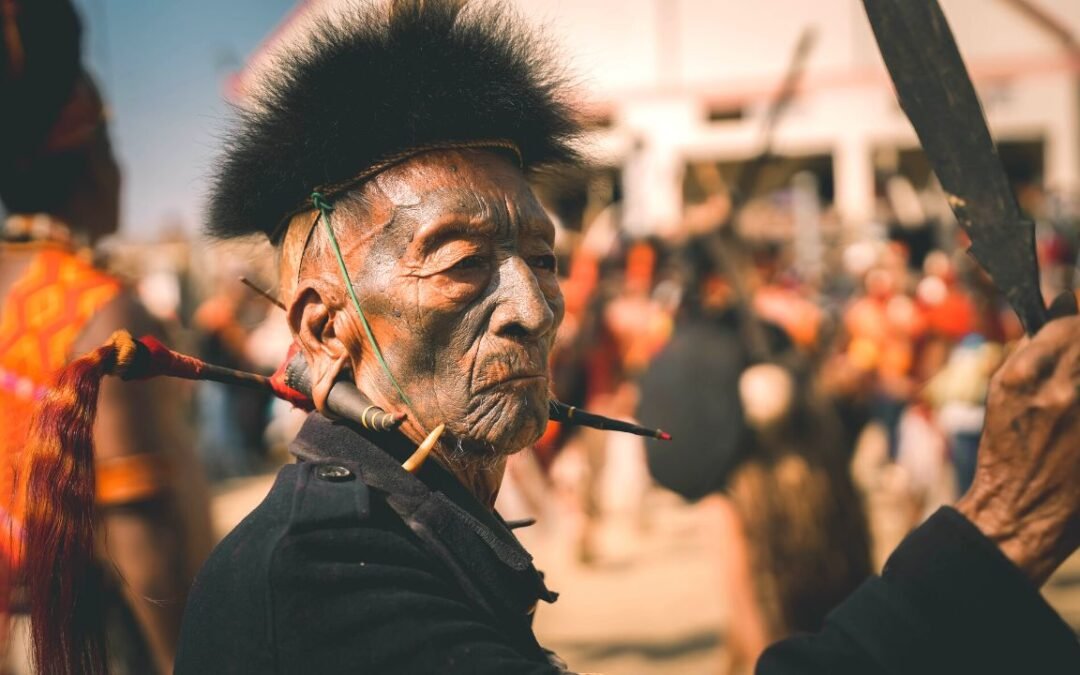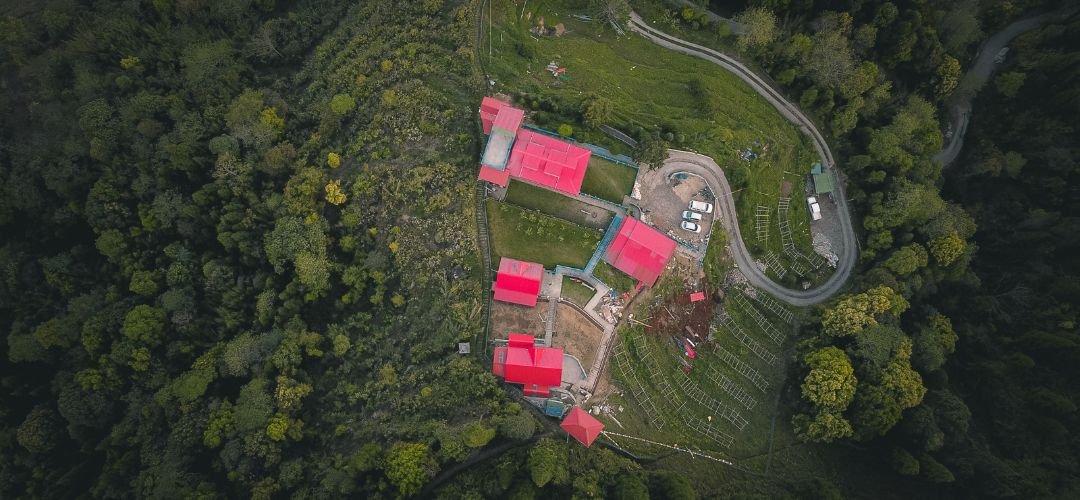The atmosphere is electrifying. There are colours everywhere – red, blue, green, yellow and pink. There is a smile on every face and song in every heart. It is spring or Basanta (in Bengali), the season of colours. And we both are now surrounded by colours and people at the Bhubandanga ground celebrating Basanta Utsav at Shantiniketan. India is a land of colourful festivals. Holi in India is perhaps the most colourful and vibrant of all the festivals in India. It is celebrated with much fervour all over the country. But there are a few places where Holi celebration is unique and special. In West Bengal, Holi or Dol Jatra is inexorably linked with Shantiniketan. Basanta Utsav at Shantiniketan, as it more popularly called here, is an event that has to be experienced and felt.

Basanta Utsav at Shantiniketan
Shantiniketan is a place that is the melting pot of learning, art, culture and dance. As Bengalis, the first thing that we are reminded of while thinking about Shantiniketan is Nobel Laureate Rabindranath Tagore. This place was previously known as Bhubandanga but later renamed as Shantiniketan by Maharishi Devendranath Tagore. He also found an ashram here in 1863 and Rabindranath Tagore came here in 1873.
Tagore spent his last days at Mongpu. Read about it here.
Rabindranath Tagore himself was not immune to the charms of spring and Dol Jatra or Holi. So he decided to celebrate this special occasion in a beautiful way – where there is much love, fun and celebration of art. And the legacy continues till date. With the advent of spring, Vishwa Bharati University at Shantiniketan gears up for the Basanta Utsav or celebration of spring. There is a riot of colours everywhere with yellow colour taking the centre stage. Men and women are dressed in colourful traditional attire. Women adorn their hair with

This year, we celebrated our Holi or Dol Jatra at Shantiniketan. The Basanta Utsav celebration is held at the Bhubandanga Playground adjacent to the Viswabharati University complex. The Utsav starts with various cultural song and dances being performed at the playground by the University students. They sing and dance to the Rabindra Sangeet of the season of spring. It is so great to see the teachers and students taking part in this cultural extravaganza. We were a little late, so the programme was almost at its end when we reached the playground. Once this is over, different groups disperse and celebrate the festival of colours in their own way.

Basanta Utsav at Shantiniketan is definitely colourful, vivid and musical. The whole ground was crowded and so was the university and roads. The people were singing and playing instruments. They were occasionally throwing colours up in the air making the whole place a riot of colours. All were playing colours with each other. A few came to us and smeared us with abir or gulaal while wishing us happy Holi. There was no bar or hindrance of any kind. Everyone was happily and joyfully playing colours. There were people of all ages. And yes, there were also no untoward incidents and misbehaviour towards any woman. Shantiniketan meaning ‘the abode of peace’ was actually a much serene place.

After the main programme, people formed various groups and started singing and dancing. There are Baul performances with the playing of ‘ektara’, a single stringed instrument. It was totally an incredible experience at Shantiniketan. There were no water colours, everyone played with dry colours – abir or gulaal. It was sublime to see all the happy abir smeared colourful faces. In very few places is Holi celebrated so peacefully yet vibrantly. As I said earlier, you have to experience the phenomenon called Basanta Utsav at Shantiniketan.
Why do we celebrate Holi in India?
Holi in India is celebrated as the victory of good over evil. Once there was a demon king named Hiranyakashipu. He was a powerful king and had got a boon that made him invincible. He had five special powers – neither

The eternal love story of Radha and Krishna
Holi in India is celebrated as an expression of the eternal love between Radha and Krishna. Young Krishna was quite mischievous and playful. It is said that Krishna was jealous of Radha’s fair complexion as his own complexion was dark. So he complained to Mother Yashodha about this injustice. Yashoda, in order to pacify Krishna asked him to put colour of his choice on Radha’s face. Krishna puts colours on Radha’s face making her like himself. It is said that Radha, Krishna and other gopis played holi and applied colours and sprinkled coloured waters by pichkari on each other. This traditions still lives and people play with colour and pichkaris on Holi.

Where can you celebrate Holi in India?
Holi in India is celebrated in various parts of India in different ways. Vrindaban, Mathura, Barsana and Nandgaon are closely associated with Radha and Krishna. Holi celebration in these places is a beautiful affair. A lot of people visit these places to experience Holi. Barsana celebrates Lath Maar Holi where the women beat the men playfully with sticks and the men protect themselves with huge shields. In West Bengal, apart from Shantiniketan, Holi is celebrated in Purulia. Wherever Holi is celebrated in India, it is always a grand affair with lots of people, colour and fun.

How to reach Shantiniketan?
The nearest Railway station is Bolpur. There are a number of trains connecting Bolpur from Howrah station. From Bolpur station, you can take a rickshaw to reach the Bhubandanga Ground at Shantiniketan where the event takes place.
BY ROAD:
Shantiniketan is about 213 Km from Kolkata by road.
PLACES TO STAY AT SHANTINIKETAN
There are numerous hotels, lodges and a few homestays at Shantiniketan. If you are planning to stay during the Basanta Utsav, it is recommended to book in advance due to the rush.
What else can you do at Shantiniketan
Visit Khowai or Sonajhuri from Shantiniketan. There is a weekend market at Khowai where local handicrafts are displayed. Also, baul songs and local dances are performed here during the Basanta Utsav.
You can read our post on Things to do in Shantiniketan.
Here are a few pictures that will make you yearn for Shantiniketan.
















0 Comments